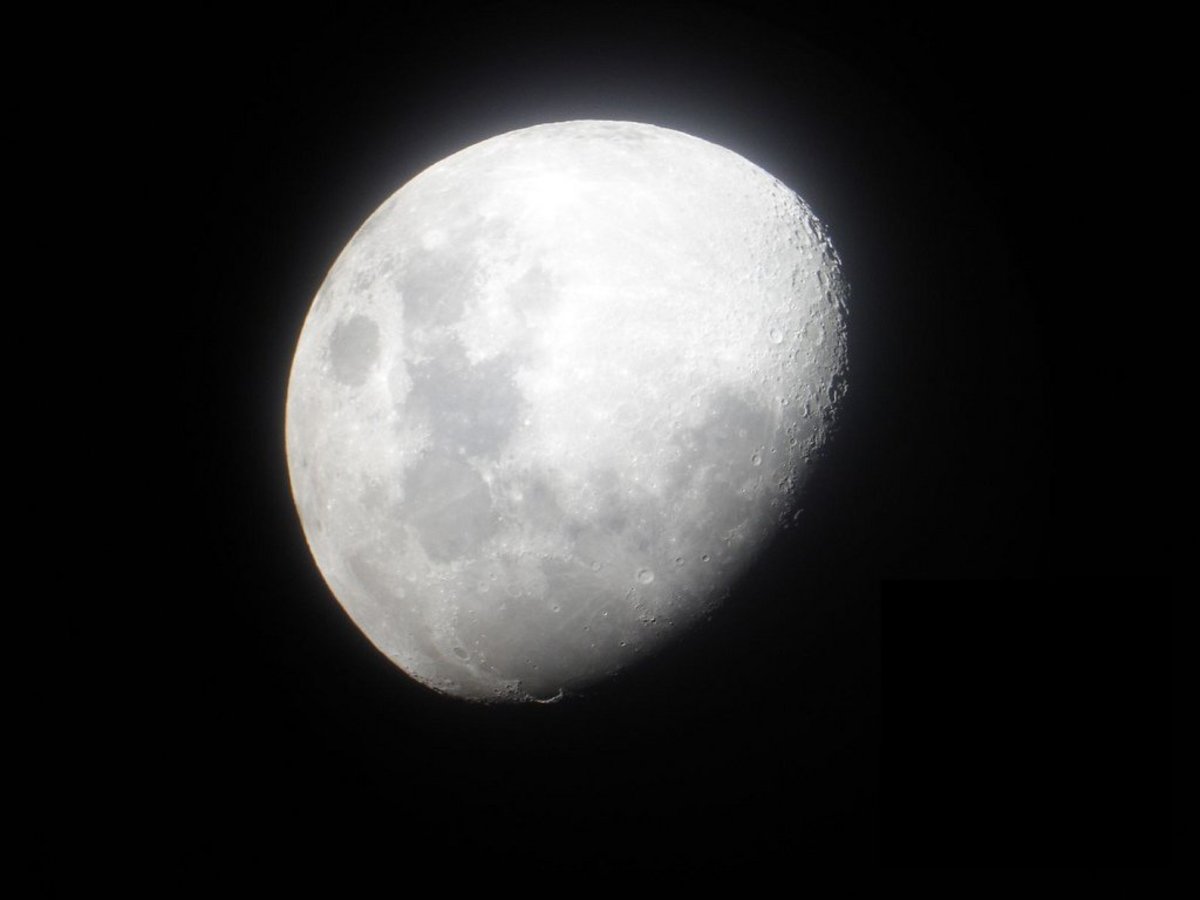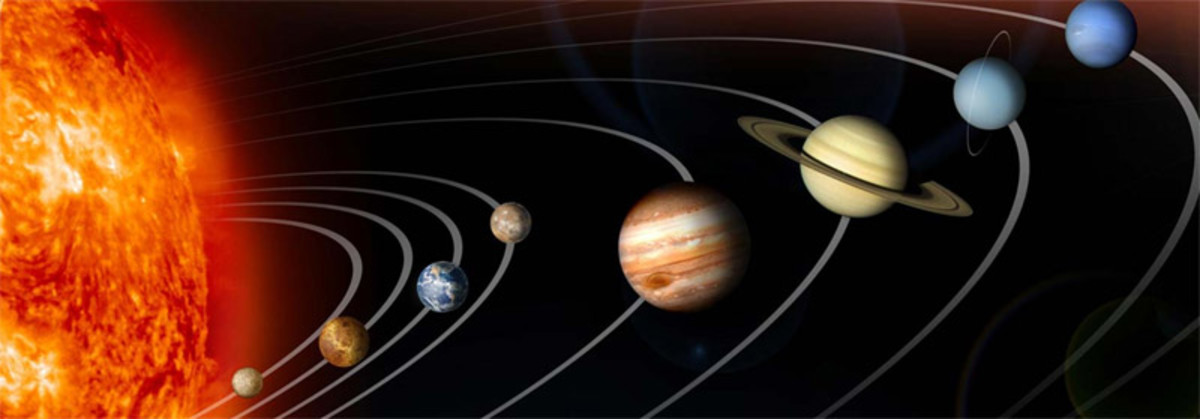Predicting an Eclipse
The Solar Plane
In my other posts, I've talked about how the solar plane contains most of the major bodies in our solar system, with the exception of the moon. Most people throw the moon in there as well, but I wanted to make a point that the two are five degrees off from each other.
The solar plane contains the sun and most of the planets. If you draw a line between the sun and the planets at any given time, it will appear straight. People might make the mistake of looking directly up when trying to draw this line - don't forget the earth is tilted and curved so up might not be the best place to look.
I like to face south when I look at the sky. That way east is on my left. When I look up, the image I see is not unlike the sketch below.
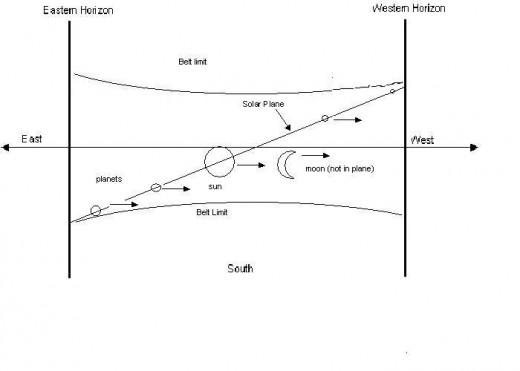
The Lunar Plane
The moon orbits the earth like the earth orbits the sun, only they are not in the same plane. They are 5 degrees off (not exact. Close enough). The earth rotates once every day while the moon orbits the earth once every 27.5 days. I've implied how the sun remains at roughly the same level in the sky throughout a couple of days but shifts in the long run between seasons. Imagine the sun stays at the same level in the sky for a month. The lunar plane will cross the solar plane twice throughout that month, once on one side of the earth and once on the other. See the image below.

Intersecting Plane Geometry
What was hardest for me to understand is that the orbit of the moon can be thought of as a gyroscope. It will not shift its tilt relative to the solar plane, at least not very fast. If the earth-moon system is on one side of the sun, it will be tilted the same angle as on the other side of the sun. The down angle will not always be on the inside of earth's orbit.
When two planes intersect, they form a line. The orbit of the moon will intersect this line at two spots per month, as I said in my first section of this post. The image below will help visualize this. The arrows point to where the orbit of the moon intersects that line. I've left out the objects in this image so that it's easier to visualize the intersect line I'm talking about.

This intersect line does not always point at the sun. However, an eclipse can only happen if it does point at the sun. Not only that, but the moon has to be in the right place in its orbit when the intersect line points at the sun. The image below portrays how the two planes can intersect favorably, yet the moon won't be there for an eclipse.
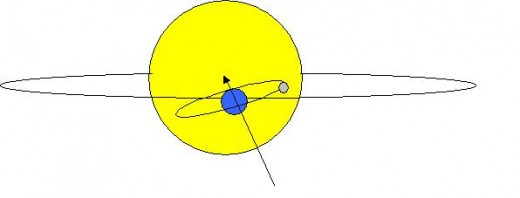
So we've established where the possibilities for an eclipse are. The two following images portray what it would look like if the moon were in the right spot.
Now even if the moon did line up correctly and you got an eclipse, you might not be on the right side of the planet to see it. For example, when the moon passes between the earth and the sun and creates a solar eclipse, it might be night where you live and you won't be able to see the eclipse at all. Then when a lunar eclipse is happening, it might be daytime where you live and you won't be able to see the moon.
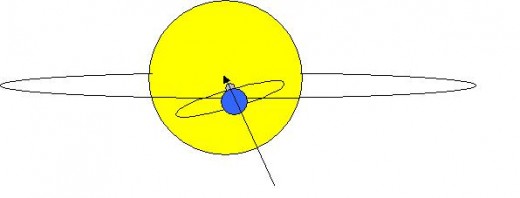
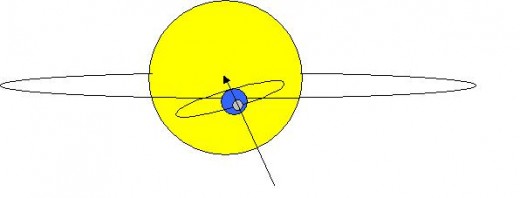
The Obviously Not Obvious
There are some basic points to eclipses that most people don't connect. For example, a lunar eclipse can only happen if the moon is full. A solar eclipse can only happen when the moon is new. You will never see an eclipse when the moon is a quarter full or half full or even a sliver.
This next suggestion is a bit of a stretch. I'm not certain how accurate this is, but I'll go out on a limb. If that arrow in the images above lines up with the sun when the earth-moon system is at one point in the orbit and again six months later, then there is a window of opportunity twice a year for eclipses to happen. Eclipse season, so to speak. However, even when it is the season, the moon might still be in the wrong spot in its orbit. That is why we don't see eclipses every July or every month.
I just had a thought occur to me. In 2003 eclipse season was in May. In 2007 it was in July. The season does shift a little. If I can study how it shifts, I can get back with you on when the next one will be and will have accurately predicted the next eclipse.
Fascinating shit, eh?
- The Sky
Most scientists analyze the sky on a computer. Don't you want to just look at the sky and know? - How Space Objects Appear to Move Vs Actual Movement
Objects move differently than they appear. Read on to see how. - Do You Want to see the Sun Rise and Set in the North?
Unlock the mysteries of a sunset in the north - and 24 hours of daylight! - Why Does the Solar Plane Sweep a Belt out of the Sky?
There is a thick line across the sky (I call it a belt) that most of the major objects in the solar system will not leave. Wanna know why?



